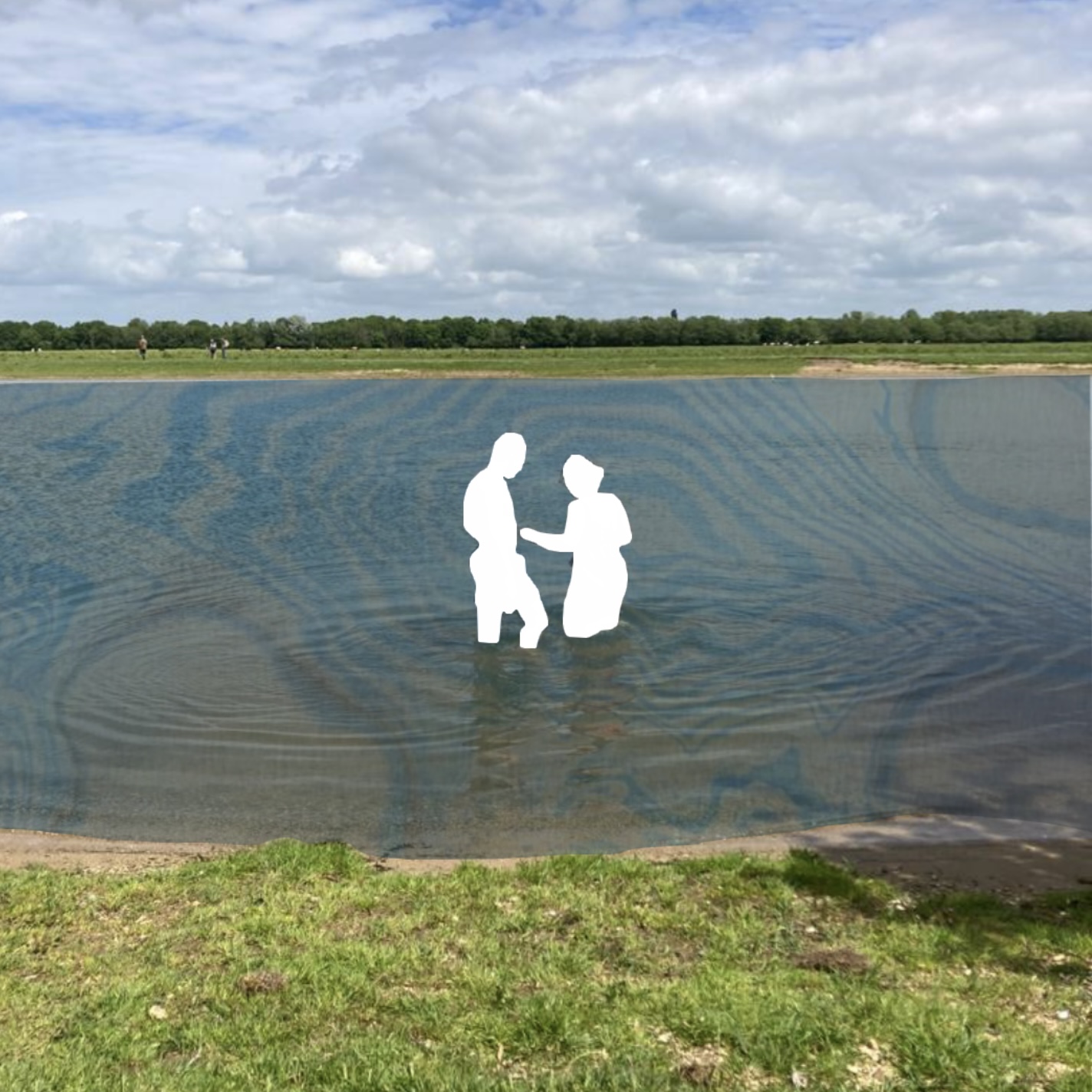
Filthy: Oxford’s Bathing River
by Anna Dowell | December 30, 2022
The UK’s rivers act as a dumping ground for excess sewage in times of high water, and Oxford’s rivers have been no exception. When students finish their examinations, they traditionally jump into the river to celebrate. Now it seems they may have been diving into raw sewage. In 2020, water companies collectively released raw sewage into rivers and seas across the UK for over three million hours, equivalent to more than 300 years’ worth of spillage [1]. Yet until 2021, none of the UK’s inland rivers were regularly tested for dangerous bacteria hazardous to human health. Earlier this year, after a long battle, a section of Wolvercote Mill Stream on the north-western corner of Port Meadow in Oxford became the UK’s second designated river bathing site [2]. This means the bacteria levels will now be monitored by the Environment Agency during bathing season in order to protect public health, but the release of the Agency’s first year of test results shows that the water is still not clean. This is the story of the Oxford community’s exceptional effort to secure clean water to swim in.
In 2020, news coverage of sewage in Oxford’s waterways outraged the community. The waterways are central to the city’s culture: beyond the student community, I have spoken to wild swimmers who start each day in the river, and an angler who has fished Oxford’s waterways for decades and now regularly drives up to 50 miles to reach clean fishing sites. The river’s role as a place for leisure is well-known. Darrin Roles, who has been organising large-scale wild swimming races in Oxford’s rivers for the last eight years. He describes providing a risk assessment, including a water quality sample, to the Environment Agency for approval before each race. Yet, until its designation earlier this year, the river was not officially recognised by the Environment Agency as a bathing site worthy of regular monitoring for dangerous bacteria, to protect the public.
The UK’s inland rivers currently seem to act as an overflow for outdated sewage infrastructure. In Oxford’s case, Thames Water is the private utility company responsible for providing the public water supply and wastewater treatment. The aged UK water infrastructure funnels clean rainwater and dirty wastewater through the same pipes into the same systems. This means that during periods of heavier rain the system becomes overwhelmed, and the only way to prevent flooding, or sewage backing up into people’s houses, is to release the whole mass, including the raw sewage, into the environment. There are around 15,000 such storm overflows in England and the vast majority of those, over 13,000, discharge to inland rivers [3]. Only designated bathing sites are tested by the Environment Agency for dangerous bacteria, so until Ilkley in West Yorkshire became the first river bathing site in 2021, no inland rivers were being formally monitored for public health risks, despite being the main site for the release of raw sewage [4].
Oxford wanted its river to be recognised as a place in which people enjoy themselves, rather than a sewage outflow. Protests were held, and in 2020 the Environment Agency was petitioned to grant Oxford bathing water designation [5]. In response, Oxford City Council, Thames Water, and two environmental charities, the Rivers Trust and Thames 21, formed the Oxford Rivers Project to co-fund testing the water quality in the area throughout 2021. Thames Water allowed the use of its own laboratory equipment, though the report was ‘‘produced independently of Thames Water and…impartially reviewed.” [6] Under this collaboration, in 2021 Oxford became the subject of the UK’s longest sustained bacterial water testing of an inland river [7]. More impressively, the testing relied upon volunteers.
I spoke to Tim Harris, the independent Environmental Consultant employed by the Rivers Trust charity to run the water quality study. He trained volunteers to sample the river across numerous sites throughout the year: the volunteers provided their time, and Harris ensured the testing was to the correct standard. The study aimed to understand the extent of the problem. Harris suggested that if the data showed exceptionally poor water quality, and if the consultation with the public indicated the river was rarely used, the Environment Agency might decide against attempting to clean it up. The results of the Oxford Rivers Project proved citizens’ concerns to be well founded. The four main river sites tested exceeded by up to three times the levels of bacteria needed for the river to be judged safe to bathe in [8]. More shockingly, Harris wrote, ‘‘it is my conclusion that data indicates the most significant impact is caused by fully and partially treated sewage inputs.”
The prime suspect for Oxford’s dirty water seems to be Thames Water, which operates the sewage works in the area. Harris’ report found that downstream of its Church Hanborough sewage treatment works, levels of bacteria reached ‘‘100 times the level sufficient for bathing.” These dangerously high levels of bacteria suggested ‘‘a release of raw sewage”, rather than a release of dilute sewage as expected from a storm overflow [9]. Release of undiluted sewage violates the legal policy of storm overflows: untreated sewage should only be released in a diluted state from storm overflows when the whole system is overwhelmed. Even legal releases from storm overflows compromise water quality. For example, during ‘‘extreme rainfall” in June, a recorded storm overflow spilt sewage for over five hours. The resulting water quality contained bacteria commonly found in human faeces, Intestinal Enterococci, at over four times the safe threshold for bathing water [10]. In response, a Thames Water spokesperson said, ‘‘while the sewage treatment process is not designed to remove bacteria, we recognise the concerns raised regarding the presence of bacteria in the River Thames which can come from multiple sources.” Concern seems well-founded, as the results of the Oxford Rivers Project ‘‘indicate [that] unsafe levels of bacterial pollution in wet periods” were ‘‘primarily” caused by sewage inputs, making the river dangerous for swimmers [11].
The community won bathing water designation for Wolvercote Mill Stream in early 2022. However, the results of the Environment Agency’s sampling over the last five months do not indicate that Oxford’s water problems are solved. In fact, we are only now receiving a formal record of the extent of the problem. Over this year, the levels of Intestinal Enterococci bacteria were nearly double the maximum level for safe water quality [12]. According to WHO guidelines, the water quality presented up to a one in ten chance of gastroenteritis from a single exposure [13]. Dirty water risks making people seriously ill: Harris concluded in his report that people should avoid ‘‘contact with the river water” for up to two days after heavy rainfall. Oxford’s designation seemed a victory, but the water remains dirty and unfit to swim in. Improvements will only begin once the water quality classification is achieved, which requires years of data collection. The Oxford Rivers Project hoped to speed up this process by providing an extra year of volunteer-collected data. Even so, classification will take at least another year, and the data suggests we remain a long way from a clean river.
Designation of Oxford’s water as a bathing spot was exceptional. Collaboration between the charities, the council and the water company was supported by crowdfunding of nearly £2,000 [14]. Testing relied upon a volunteer effort over the course of a year. Ilkley’s bathing water status, the only other inland river to achieve designated bathing water status, was likewise the result of an impressive community effort, ranging from donations to sampling done by citizen scientists [15]. Across the UK, such community efforts will not be possible everywhere, particularly not amongst struggling communities. If cleaning up a local river requires meeting a burden of local campaigning, inequality across the country will be reproduced in inequality in the cleanliness of our rivers. It cannot be expected that all communities should have to devote such money, time, volunteer force, and protest power, to achieve something so simple as a river free of sewage.
Yet, that is the system. With only two inland rivers designated as bathing sites, the rest of the UK’s inland rivers go untested, despite the dangerous levels of bacteria they may contain from the untreated sewage legally released into them. Since 2009, the responsibility for testing water quality outside bathing areas has been left to the water companies themselves, essentially putting the monitoring of pollution in the hands of those who would hypothetically be the main polluters [16]. Standards need to be enforced by the Environment Agency, but between 2011 and 2016 their funding was more than halved, and the number of water pollution samples they took fell by more than a quarter [17]. These cuts have been felt by the Oxford community: swimmers noted the visibly reduced presence of the Agency in Oxford’s waterways over the last decade. An angler I met expressed deep frustration at the deterioration of the river. He had witnessed cloudy water pouring into the river through pipes, seen the fish and plant life suffer, and found the Environment Agency unresponsive to concerns. The Environment Agency declined to respond to a request for comment.
After this decade of underfunding, the Environment Agency’s review in 2021 found the environmental performance of privatised water and sewerage companies to be ‘‘the worst we have seen for years.” [18] In response to suspected illegal sewage dumping, a criminal investigation has been launched by the Environment Agency spanning over 2,000 water treatment works [19]. Ofwat has announced various companies will collectively have to recompense customers £150 million in the form of lower bills because they didn’t meet their pollution requirements [20]. Thames Water was the most penalised of the eleven companies, losing £51 million. Crucially, it made nearly £500 million in profit last year. As the chair of the Environment Agency says, the fines imposed are usually not punitive enough. In short, the polluter must pay [22].
The criminal investigation will determine if sewage dumping across the UK has been intentional and unnecessary. To some extent, the problem is the outdated infrastructure: new water systems need to be built by water companies reinvesting profits to remove the need for overflows altogether. In August, the government launched a long-term plan to ‘‘revolutionise our sewer system” and stop storm overflows outside unusually heavy rainfall by 2050. To this end, they have required ‘‘water companies to deliver £56bn capital investment over 25 years”, and will be installing monitoring on all sewage outflows to police this [23]. When contextualised by a consultant’s report into the costs of removing storm overflows, this proposed investment seems on the modest end of the necessary funding but within the right range [24]. Critics say these costs may end up on customers’ bills. A Thames Water spokesperson said that it will be ‘‘spending an additional £2bn beyond what our customers are funding,” and will increase sewage treatment capacity at the Witney sewage works upstream of the bathing site by 2025. They did not present plans to upgrade the closest sewage works, Cassington, which are only four kilometres upstream. Without updated water systems that can reliably handle the demands of the population, the UK’s inland rivers act as de facto overflow zones for raw sewage, and this sorely needed investment proposes to take 28 years to change this.
Oxford’s Wolvercote Mill Stream is now one of the country’s two inland rivers expected to be fit to swim in. Despite this exceptional status, Oxford’s water is not yet clean, and change will be slow. The designation was hard-won, and when Oxford’s water eventually does improve, this will not be easily replicated across the country. The official expectation that only two inland river sites are safe for swimming is a dismal prospect, and the fish and wildlife who struggle to live in the UK’s polluted waterways cannot choose whether to get in the water. Oxford’s designation as a bathing site is long overdue for a river that has been a popular swimming site for decades, but it brings to light the unfairness of the ultimatum for the UK’s inland rivers; they are either bathing sites clean for human use, or places to offload raw sewage.∎
Words by Anna Dowell. Art by Violet Trevelyan-Clark.
1 https://environment.data.gov.uk/portalstg/home/item.html?id=045af51b3be545b79b0c219811d3d243
2 http://environment.data.gov.uk/bwq/profiles/profile.html?site=ukj1402-11946
3 https://lordslibrary.parliament.uk/storm-overflows-discharge-reduction-plan/
4 http://environment.data.gov.uk/bwq/profiles/profile.html?site=uke4100-08901
5 https://www.gov.uk/government/publications/unconsented-end-sewage-pollution-protest-2020-river-closure-notice/unconsented-end-sewage-pollution-protest-2020-river-closure-notice https://www.change.org/p/environment-agency-give-the-thames-through-oxford-designated-bathing-water-status/u/27837835
6 ORP Final Report, (https://endsewagepollutionthames.wordpress.com/2022/05/25/just-how-much-bacteria-is-in-oxfords-rivers/), pg. 2
7 https://www.thames21.org.uk/improving-rivers/oxford-rivers-project/ , Interview with Tim Harris 21/09/2022, and https://committees.parliament.uk/oralevidence/2078/pdf/
8 ORP Final Report, pg. 3.
9 ORP Final Report, pg. 6, 29
10 ORP Final Report, pg. 23, 16
11 ORP Final Report, pg. 6
12 http://environment.data.gov.uk/bwq/profiles/data-samples.html?site=ukj1402-11946
13 https://www.who.int/publications/i/item/9789240031302 WHO 2021 guidelines on recreational water quality: Vol 1 coastal and fresh waters pg. xii, Table 0.1
14 https://www.justgiving.com/crowdfunding/endsewagepollution-mid-thames-1?utm_term=jNrKQ737e
15 https://drive.google.com/file/d/16xVLqwzmg2OblH2wZfEP22RXWQ7x57va/view
17 https://www.unchecked.uk/wp-content/uploads/2019/09/The-UKs-Enforcement-Gap-1.pdf
21 https://www.ofwat.gov.uk/investigation-into-sewage-treatment-works/ https://www.bromleylibdems.org.uk/thames_water
23 https://lordslibrary.parliament.uk/storm-overflows-discharge-reduction-plan/#heading-3




